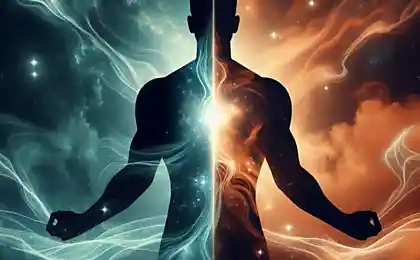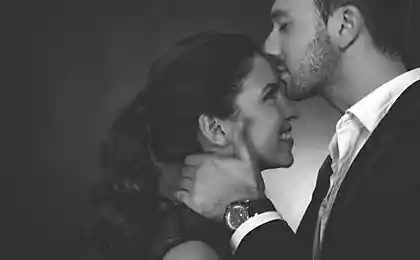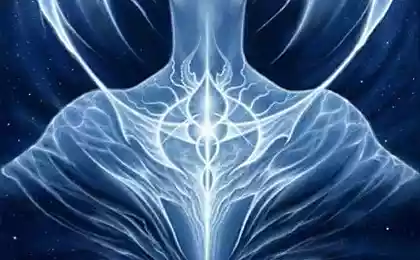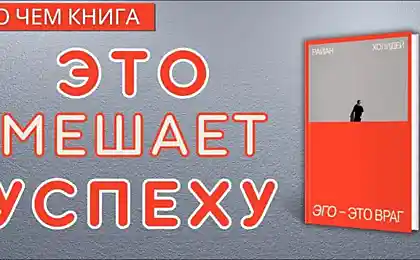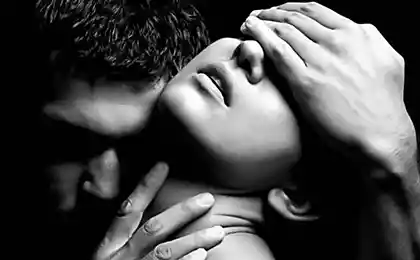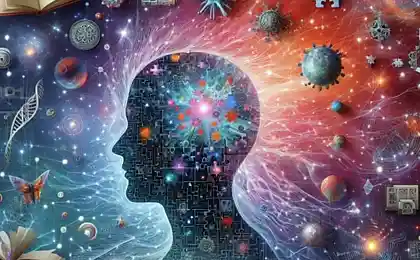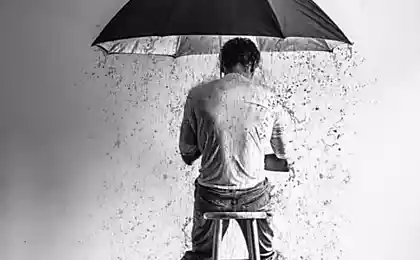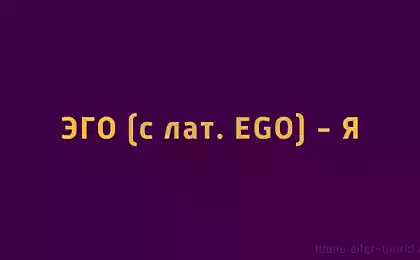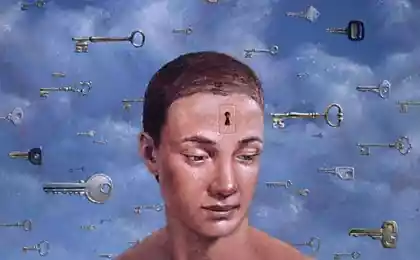1049
Assagioli in psychosynthesis: theory of personality
If there is an analysis (decomposition into parts), then there is a synthesis (the creation of a whole from parts).
Imbalance (mental discomfort) often arises because our mental processes is fragmented or even contradictory.
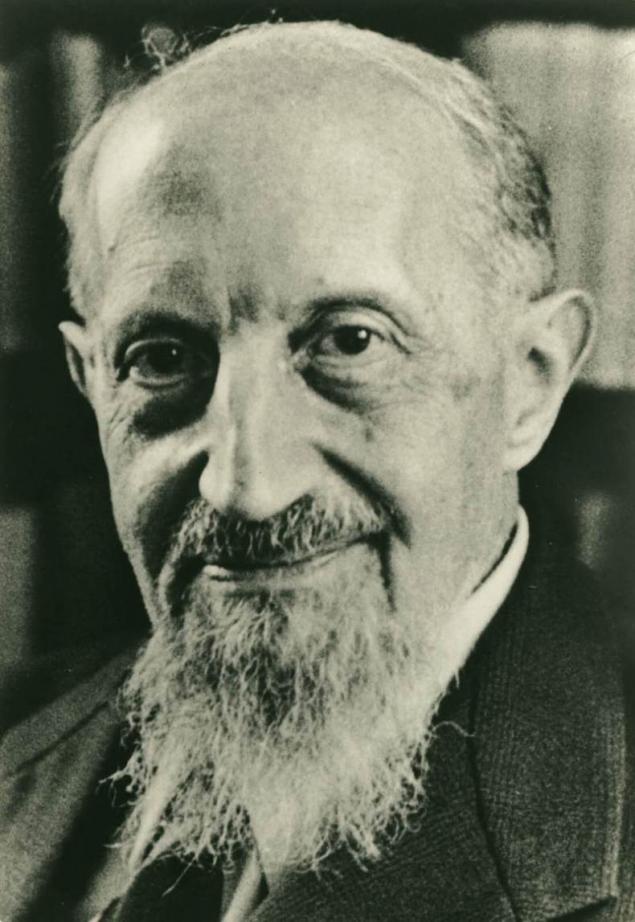
Roberto Assagioli (1888 — 1974) believed that in the process of psychosynthesis need these "parts", these disparate mental processes, desires, aspirations are first to understand and then combine. But not just to unite, to combine to create harmony.
At the core of psychosynthesis is the psychoanalysis of Freud (you'll notice the similarity of the terminology), but the originality of the selected theoretical perspectives and methodological approaches in the treatment of allowed Assagioli to create an independent psychotherapeutic direction.
Personality structure, or "map of the inner world", Assagioli, consists of:
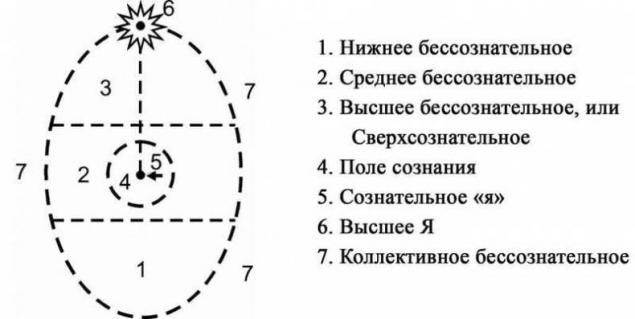
The lower unconscious represents the most primitive part of our personality.
It includes:
Higher unconscious (preconscious) — the area where are all the mental skills and States. Here there is assimilation of lessons learned, are born and ripen the fruits of our mind. Secondary unconscious and consciousness are closely linked, and can spontaneously transform into each other.
Higher unconscious (superassociations) — the area of formation and a source of inspiration, creativity, heroism, altruism and other higher feelings. Here, according to Assagioli, arise and focus of higher psychic functions and spiritual energy.
We cannot say that the lower unconscious "worse" is higher. Just lower the unconscious is the beginning, the Foundation, and superessential is the provision of personal development.
The field of consciousness is directly realized part of the personality. It is a continuous stream of sensations, thoughts, desires, and available to our observation and analysis.
Conscious I is the center of our consciousness, but it is not the conscious part of our personality (consciousness field). Assagioli so emphasizes the difference: "the Existing a distinction between them in some sense resembles the distinction between the illuminated area of the screen and project onto it." It is this element of personality Assagioli calls Ego.
Higher self — our true self. I conscious changes or disappears when the disturbance of consciousness (coma, fainting, narcosis, hypnosis, etc.). The higher self does not change and disappear. So Assagioli calls his true self and believes that he after a deep sleep, fainting or anesthesia, I again returned to the "field of consciousness", i.e. again begins to sink us.
Assagioli he writes: "In reality, no two I, two independent and separate beings. There is only I, which manifests itself at different levels of consciousness and self-realization".
Awareness of personal I — a mental health condition, the realization of the transpersonal I — a sign of spiritual perfection.
Our psyche is not isolated, by the figurative expression Ferrucci, swims in the ocean, which Carl Jung called the collective unconscious. According to Jung, the collective unconscious contains the experience of all mankind, and is transmitted from generation to generation. Assagioli emphasizes that external oval schema "Structure of personality" is not accidental representing the dotted line should not be viewed as "separates", but only as "dividing" the collective unconscious of Jung.
The technique of psychosynthesis
The main tasks of psychosynthesis, Assagioli are:
In psychosynthesis are two basic methods:
1) the method of disidentification,
2) work on the personalities.
Both methods are based on the psychological principle that Assagioli formulated in the following way: "Above us dominates everything with which we identify. We can dominate and control everything from what we were rabotodateli".
Dis-identification of aPerson, unlike an animal, is inherent in consciousness. Identity, in turn, is accompanied by the process of identifying oneself with the most relevant elements of personality, feelings, desires.
Such a one-sided identification with one part of his personality first of all difficult knowledge "himself to himself". Furthermore, prolonged identification with the individual elements of identity often leads to tragedy: "suffering athlete", "fading actress", "retired politician", etc.
These identifications can be persistent, but can wear and temporary.
Each of us sometimes says (or thinks): I'm annoyed; I have everything goes wrong; I have nothing. We can surrender to those feelings or to be identified with them for a long time to fall into anger or depression, and may distinguish these feelings from their conscious selves are aware of them, to try to see the cause and unwanted effects.
Sometimes this is enough to sustain the onset of the "dark" forces.
The sense of disidentification, teaches Assagioli is to separate dedicated systems and "images" from our conscious selves, to put on the items and try to control them and manage them. "In other words, writes Assagioli, we need to observe them coldly and dispassionately as if they were merely external natural phenomena. You must establish between himself and them "psychological distance" and hold these complexes and fancies, so to speak, at arm's length, safely explore their origin, their nature and their stupidity."
This does not mean that the energy of these negative feelings and desires is necessary to restrain and suppress. This energy cannot be let slide. You need to learn to control it and control it, directing in a constructive way, but this is only possible in the delimitation and understanding the core of your personality, your true self.
Work on the personalities
The figurative expression of P. Ferrucci, subpersonalities is a "psychological satellites, existing as many lives inside full of personality". Every individual, on the one hand, holistic and unique from other multi-layered and diverse.
Each of us gets a lot of "types", often opposed to each other.
K. Jung, speaking about the structure of personality allocated "shadow", contrasting it with our conscious Ya.
The number of sub-personalities forever. They're volatile. The more the people internally richer, but less purposeful. It can be a purposeful and great wealth of personalities, but it needs to be in a certain harmony, in harmony.
We can't talk about good or bad personalities, as they are all representing the many facets of our whole personality. But sometimes one (or more) of the subpersonalities dominates and begins to control our feelings and behavior.
It is first important to identify your main personality (usually two or three). This alone gives you the opportunity to have a clearer view of your inner life. Once you know the personality, you gain the opportunity to step back from it and observe it from the sidelines. This process is called psychosynthesis disidentification.
People are more inclined to identify; disidentification — the reverse process. The attainment of self — identification or creation of a unifying center J.
The essence of the true self is to expand the narrow field of personal consciousness mainly due to the higher unconscious, merge the lower self with the higher self. All seemingly simple: to realize your true nature, your "core", but, as rightly pointed out by Assagioli, "easy to say behind these words lies the most difficult enterprise".
In this context, an interesting idea P. Ferrucci:
"I'm psychosynthesis is neither a passive spectator nor an actor. It is more of a producer, whose show, responsible for the quality, timeliness and sensitive leadership."
For acquaintance with the methods of psychosynthesis you may do the following exercise.
"Who am I?"
This exercise helps to identify our true self, which is manifested outwardly not only positive but also negative sides. You can perform it at home.
Performing the exercise, use the following procedure.
1. Choose a quiet place, take your workbook, mark the date and write the question: "Who am I"? Below, write the answer to this question. Try to the answer was very open and honest. You can ask this question several times and several times to answer it.
2. Sit down, close your eyes, relax. Mentally ask yourself the question "Who am I?" and try to grasp the answer in the form of the image. Impartially examine the resulting image, open your eyes and describe it.
3. After a minute close your eyes again and again ask yourself the same question. Now pozvolte the answer to be expressed in movement, in dance or singing. Trust the wisdom of your body. You may Express in the movements of a particular image.
4. After share your experience with someone whom you trust, or describe your feelings in a notebook.
Depending on the region and purpose of application of psychosynthesis can be:
In conclusion, I would like to disassemble one interesting idea that Assagioli expressed almost 30 years ago, but which is relevant in our days.
The idea of this is that individual psychosynthesis is a particular case of universal interpersonal synthesis. Man does not live in a vacuum. Each individual is closely linked with other individuals, therefore the person should be considered as an element of human groups. Small groups (family) are members of large groups (social class, nation). Large groups can be combined into States, and States are elements of humanity in General.
Between individuals within groups and between groups (small and large) conflicts, its mechanism is remarkably similar to those inherent in each separate individual. Therefore, to resolve them (interpersonal psychosynthesis) on the same plan and roughly the same methods, by means of which the individual psychosynthesis. From the analysis of conflict, disharmony — to the synthesis of harmony around the true and independent "center".
Original R. Assagioli considered two levels of psychosynthesis. He singled out the formation stage of the integrated personality (personal psychosynthesis) and the next stage of spiritual development (spiritual psychosynthesis). To the field of spiritual psychosynthesis he took a lot of phenomena and mental States, which meets the one who plunges into the depths of your unconscious.
Currently, many followers of this trend tend to take a three-tiered model proposed by T. Womancom. He divides the process of psychosynthesis not two, but three stages:
Stage of identity formation is consistent with the phase allocated to R. Assagioli. This period is the integration of the personality around the "personal I". The objective of this stage is to structure and (or) to coordinate all aspects of the personality, to give her a new healthy, effective way to cope with the surrounding reality.
This work should precede the transition to other stages. Premature opening of the transpersonal energies can lead, on the contrary, to a deepening of the personality disorders, the growth of Ego, regressive behavior.
Transpersonal work is related to the expansion of consciousness beyond the usual boundaries in any other region (in the personal or collective unconscious). This work involves detailed study of the different levels of the psyche, corresponding, for example, different areas of the oval chart R. Assagioli, or "memories of his birth." This also may include work with what Jung called the shadow, or Anima and animus and their integration. It can also be "experiencing past lives", a manifestation of psychic abilities, psychic phenomena, etc.
Thus, the transpersonal is a field that gives you the ability to literally deeper and more fully to know themselves, to see and feel and sometimes hear the hand and of energy, which until now was inaccessible to consciousness and to incorporate them into a fuller sense of your "personal self".
Spiritual level compared to the transpersonal, whose attention is directed to the contents of the unconscious, speaking directly to the energies of synthesis, to the will of the "Spiritual Me." Here, the aim is to bring the personal will into conformity with the will "Spiritual," i.e., the actual dissolution in the Supreme will.
In contrast to the transpersonal level experiences on the stage of spiritual psychosynthesis have no content. If the psyche has the content, the identity has a dynamic structure, the "Spiritual Me" is pure being, pervading them. It is the energy that fills the entire system is a sense of total harmony, full satisfaction with the status quo, a sense of inner strength and confidence. Thus there is no need to explore any area of consciousness, to make sense of them. Everything is clear and there is knowledge without understanding.
Work with the "Spiritual self" has its own levels and challenges. Here you are not offered the expansion of consciousness to new knowledge. If we assume that "Spiritual I" is the condition for the existence of the psyche, and the psyche — condition for the existence of the individual, it is clear that the more transparent the "prism" of the psyche and personality, the more light from the "Spiritual I" will reach the outside world.
Thus, work on personal and transpersonal levels is to associate and customize the internal system of "prism". Spiritual I" becomes the head of the work of psychosynthesis, it becomes both a condition and a result of work at other levels.
It is the "Spiritual self" embodies the God consciousness, the potential to understand It. The person who manages to achieve the full "settings" lives in the Absolute World, where the concept of "inner Peace" and "outside" are identical and the boundary between them disappears, and, consequently, there is no contradiction. Living in the Absolute World, he is an absolute thoughts and feelings, makes the absolute action. That is why every word, action and even the thought of such a person contain enormous transformative power.published
P. S. And remember, just changing your mind — together we change the world! ©
Source: //www.psychologos.ru/articles/view/psihosintez_dvoe_zn__teoriya_lichnosti
- In order to find the cause of disharmony, neurosis, preferred analysis.
- In order to create harmony and homeostasis, the preferred synthesis.
Imbalance (mental discomfort) often arises because our mental processes is fragmented or even contradictory.

Roberto Assagioli (1888 — 1974) believed that in the process of psychosynthesis need these "parts", these disparate mental processes, desires, aspirations are first to understand and then combine. But not just to unite, to combine to create harmony.
At the core of psychosynthesis is the psychoanalysis of Freud (you'll notice the similarity of the terminology), but the originality of the selected theoretical perspectives and methodological approaches in the treatment of allowed Assagioli to create an independent psychotherapeutic direction.
Personality structure, or "map of the inner world", Assagioli, consists of:

The lower unconscious represents the most primitive part of our personality.
It includes:
- the simplest forms of mental activity, govern the life of the body;
- basic instincts and primal urges;
- numerous complexes that carry a strong emotional charge;
- samples nightmarish dreams and fantasies;
- uncontrolled parapsychological processes.
Higher unconscious (preconscious) — the area where are all the mental skills and States. Here there is assimilation of lessons learned, are born and ripen the fruits of our mind. Secondary unconscious and consciousness are closely linked, and can spontaneously transform into each other.
Higher unconscious (superassociations) — the area of formation and a source of inspiration, creativity, heroism, altruism and other higher feelings. Here, according to Assagioli, arise and focus of higher psychic functions and spiritual energy.
We cannot say that the lower unconscious "worse" is higher. Just lower the unconscious is the beginning, the Foundation, and superessential is the provision of personal development.
The field of consciousness is directly realized part of the personality. It is a continuous stream of sensations, thoughts, desires, and available to our observation and analysis.
Conscious I is the center of our consciousness, but it is not the conscious part of our personality (consciousness field). Assagioli so emphasizes the difference: "the Existing a distinction between them in some sense resembles the distinction between the illuminated area of the screen and project onto it." It is this element of personality Assagioli calls Ego.
Higher self — our true self. I conscious changes or disappears when the disturbance of consciousness (coma, fainting, narcosis, hypnosis, etc.). The higher self does not change and disappear. So Assagioli calls his true self and believes that he after a deep sleep, fainting or anesthesia, I again returned to the "field of consciousness", i.e. again begins to sink us.
Assagioli he writes: "In reality, no two I, two independent and separate beings. There is only I, which manifests itself at different levels of consciousness and self-realization".
Awareness of personal I — a mental health condition, the realization of the transpersonal I — a sign of spiritual perfection.
Our psyche is not isolated, by the figurative expression Ferrucci, swims in the ocean, which Carl Jung called the collective unconscious. According to Jung, the collective unconscious contains the experience of all mankind, and is transmitted from generation to generation. Assagioli emphasizes that external oval schema "Structure of personality" is not accidental representing the dotted line should not be viewed as "separates", but only as "dividing" the collective unconscious of Jung.
The technique of psychosynthesis
The main tasks of psychosynthesis, Assagioli are:
- the attainment of your true (higher) self,
- achievement on the basis of this internal harmony,
- the establishment of adequate relationships with the outside world, including with other people.
In psychosynthesis are two basic methods:
1) the method of disidentification,
2) work on the personalities.
Both methods are based on the psychological principle that Assagioli formulated in the following way: "Above us dominates everything with which we identify. We can dominate and control everything from what we were rabotodateli".
Dis-identification of aPerson, unlike an animal, is inherent in consciousness. Identity, in turn, is accompanied by the process of identifying oneself with the most relevant elements of personality, feelings, desires.
- Some identify themselves primarily with their body (athletic, fit),
- others with intelligence (the scientist, "the wise gudgeon"),
- others with the feelings (lover boy).
Such a one-sided identification with one part of his personality first of all difficult knowledge "himself to himself". Furthermore, prolonged identification with the individual elements of identity often leads to tragedy: "suffering athlete", "fading actress", "retired politician", etc.
These identifications can be persistent, but can wear and temporary.
Each of us sometimes says (or thinks): I'm annoyed; I have everything goes wrong; I have nothing. We can surrender to those feelings or to be identified with them for a long time to fall into anger or depression, and may distinguish these feelings from their conscious selves are aware of them, to try to see the cause and unwanted effects.
Sometimes this is enough to sustain the onset of the "dark" forces.
The sense of disidentification, teaches Assagioli is to separate dedicated systems and "images" from our conscious selves, to put on the items and try to control them and manage them. "In other words, writes Assagioli, we need to observe them coldly and dispassionately as if they were merely external natural phenomena. You must establish between himself and them "psychological distance" and hold these complexes and fancies, so to speak, at arm's length, safely explore their origin, their nature and their stupidity."
This does not mean that the energy of these negative feelings and desires is necessary to restrain and suppress. This energy cannot be let slide. You need to learn to control it and control it, directing in a constructive way, but this is only possible in the delimitation and understanding the core of your personality, your true self.
Work on the personalities
The figurative expression of P. Ferrucci, subpersonalities is a "psychological satellites, existing as many lives inside full of personality". Every individual, on the one hand, holistic and unique from other multi-layered and diverse.
Each of us gets a lot of "types", often opposed to each other.
K. Jung, speaking about the structure of personality allocated "shadow", contrasting it with our conscious Ya.
The number of sub-personalities forever. They're volatile. The more the people internally richer, but less purposeful. It can be a purposeful and great wealth of personalities, but it needs to be in a certain harmony, in harmony.
We can't talk about good or bad personalities, as they are all representing the many facets of our whole personality. But sometimes one (or more) of the subpersonalities dominates and begins to control our feelings and behavior.
It is first important to identify your main personality (usually two or three). This alone gives you the opportunity to have a clearer view of your inner life. Once you know the personality, you gain the opportunity to step back from it and observe it from the sidelines. This process is called psychosynthesis disidentification.
People are more inclined to identify; disidentification — the reverse process. The attainment of self — identification or creation of a unifying center J.
The essence of the true self is to expand the narrow field of personal consciousness mainly due to the higher unconscious, merge the lower self with the higher self. All seemingly simple: to realize your true nature, your "core", but, as rightly pointed out by Assagioli, "easy to say behind these words lies the most difficult enterprise".
In this context, an interesting idea P. Ferrucci:
"I'm psychosynthesis is neither a passive spectator nor an actor. It is more of a producer, whose show, responsible for the quality, timeliness and sensitive leadership."
For acquaintance with the methods of psychosynthesis you may do the following exercise.
"Who am I?"
This exercise helps to identify our true self, which is manifested outwardly not only positive but also negative sides. You can perform it at home.
Performing the exercise, use the following procedure.
1. Choose a quiet place, take your workbook, mark the date and write the question: "Who am I"? Below, write the answer to this question. Try to the answer was very open and honest. You can ask this question several times and several times to answer it.
2. Sit down, close your eyes, relax. Mentally ask yourself the question "Who am I?" and try to grasp the answer in the form of the image. Impartially examine the resulting image, open your eyes and describe it.
3. After a minute close your eyes again and again ask yourself the same question. Now pozvolte the answer to be expressed in movement, in dance or singing. Trust the wisdom of your body. You may Express in the movements of a particular image.
4. After share your experience with someone whom you trust, or describe your feelings in a notebook.
Depending on the region and purpose of application of psychosynthesis can be:
- method of self-discovery and self-development;
- treatment (mostly borderline neuro-mental disorders and psychosomatic diseases);
- the method of education.
In conclusion, I would like to disassemble one interesting idea that Assagioli expressed almost 30 years ago, but which is relevant in our days.
The idea of this is that individual psychosynthesis is a particular case of universal interpersonal synthesis. Man does not live in a vacuum. Each individual is closely linked with other individuals, therefore the person should be considered as an element of human groups. Small groups (family) are members of large groups (social class, nation). Large groups can be combined into States, and States are elements of humanity in General.
Between individuals within groups and between groups (small and large) conflicts, its mechanism is remarkably similar to those inherent in each separate individual. Therefore, to resolve them (interpersonal psychosynthesis) on the same plan and roughly the same methods, by means of which the individual psychosynthesis. From the analysis of conflict, disharmony — to the synthesis of harmony around the true and independent "center".
Original R. Assagioli considered two levels of psychosynthesis. He singled out the formation stage of the integrated personality (personal psychosynthesis) and the next stage of spiritual development (spiritual psychosynthesis). To the field of spiritual psychosynthesis he took a lot of phenomena and mental States, which meets the one who plunges into the depths of your unconscious.
Currently, many followers of this trend tend to take a three-tiered model proposed by T. Womancom. He divides the process of psychosynthesis not two, but three stages:
- personal
- transpersonal,
- spiritual.
Stage of identity formation is consistent with the phase allocated to R. Assagioli. This period is the integration of the personality around the "personal I". The objective of this stage is to structure and (or) to coordinate all aspects of the personality, to give her a new healthy, effective way to cope with the surrounding reality.
This work should precede the transition to other stages. Premature opening of the transpersonal energies can lead, on the contrary, to a deepening of the personality disorders, the growth of Ego, regressive behavior.
Transpersonal work is related to the expansion of consciousness beyond the usual boundaries in any other region (in the personal or collective unconscious). This work involves detailed study of the different levels of the psyche, corresponding, for example, different areas of the oval chart R. Assagioli, or "memories of his birth." This also may include work with what Jung called the shadow, or Anima and animus and their integration. It can also be "experiencing past lives", a manifestation of psychic abilities, psychic phenomena, etc.
Thus, the transpersonal is a field that gives you the ability to literally deeper and more fully to know themselves, to see and feel and sometimes hear the hand and of energy, which until now was inaccessible to consciousness and to incorporate them into a fuller sense of your "personal self".
Spiritual level compared to the transpersonal, whose attention is directed to the contents of the unconscious, speaking directly to the energies of synthesis, to the will of the "Spiritual Me." Here, the aim is to bring the personal will into conformity with the will "Spiritual," i.e., the actual dissolution in the Supreme will.
In contrast to the transpersonal level experiences on the stage of spiritual psychosynthesis have no content. If the psyche has the content, the identity has a dynamic structure, the "Spiritual Me" is pure being, pervading them. It is the energy that fills the entire system is a sense of total harmony, full satisfaction with the status quo, a sense of inner strength and confidence. Thus there is no need to explore any area of consciousness, to make sense of them. Everything is clear and there is knowledge without understanding.
Work with the "Spiritual self" has its own levels and challenges. Here you are not offered the expansion of consciousness to new knowledge. If we assume that "Spiritual I" is the condition for the existence of the psyche, and the psyche — condition for the existence of the individual, it is clear that the more transparent the "prism" of the psyche and personality, the more light from the "Spiritual I" will reach the outside world.
Thus, work on personal and transpersonal levels is to associate and customize the internal system of "prism". Spiritual I" becomes the head of the work of psychosynthesis, it becomes both a condition and a result of work at other levels.
It is the "Spiritual self" embodies the God consciousness, the potential to understand It. The person who manages to achieve the full "settings" lives in the Absolute World, where the concept of "inner Peace" and "outside" are identical and the boundary between them disappears, and, consequently, there is no contradiction. Living in the Absolute World, he is an absolute thoughts and feelings, makes the absolute action. That is why every word, action and even the thought of such a person contain enormous transformative power.published
P. S. And remember, just changing your mind — together we change the world! ©
Source: //www.psychologos.ru/articles/view/psihosintez_dvoe_zn__teoriya_lichnosti
Groundcover plants: the best solution for garden nooks
These simple exercises will help to improve the sound of your voice
